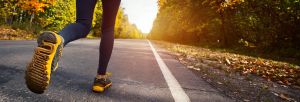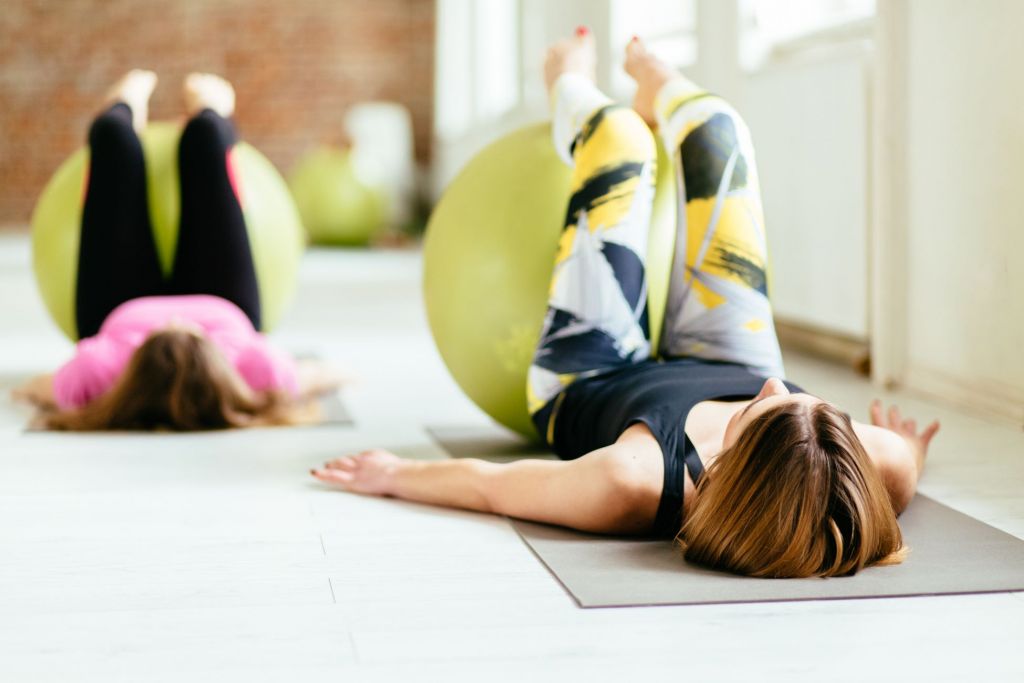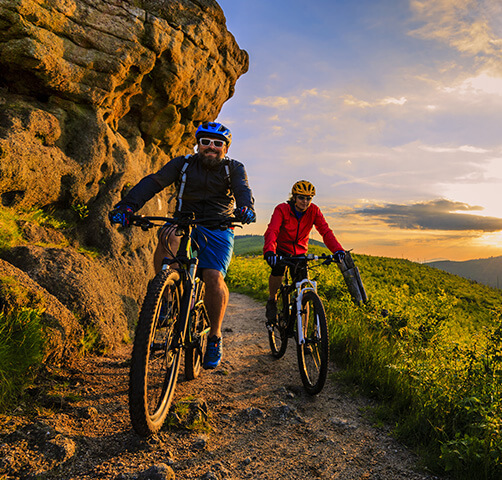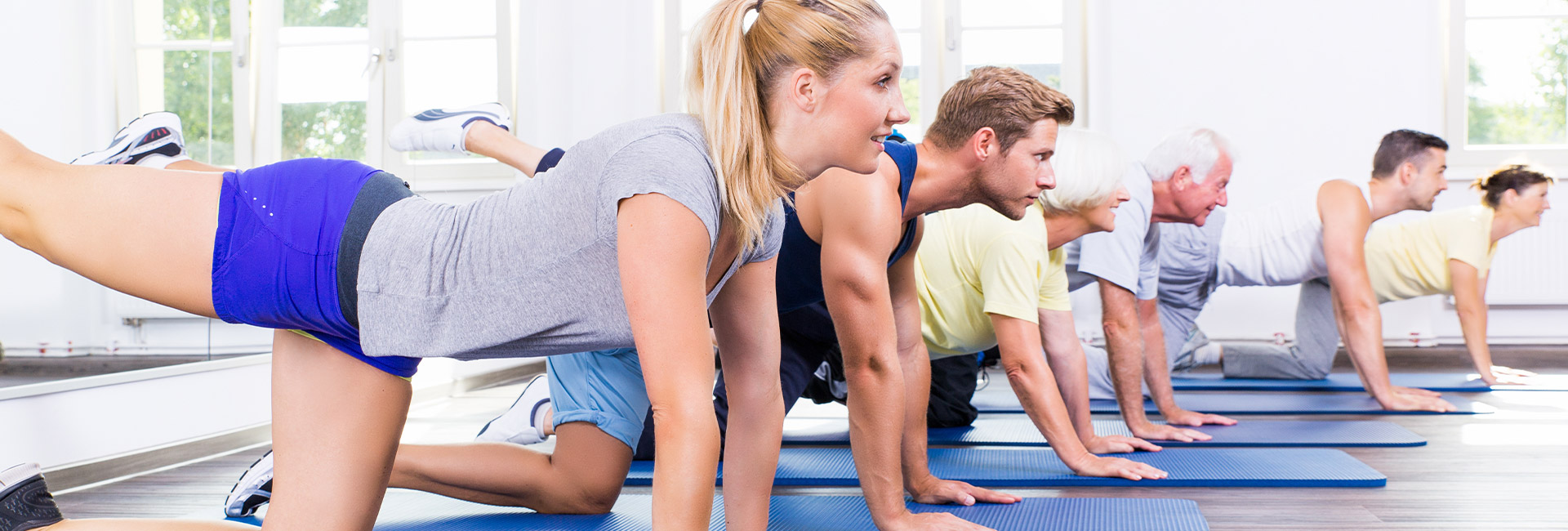We have all seen it before, it is officially the start of a new year and gyms are filling up as people try to make good on their fitness resolutions. Maybe you have a goal to lose weight, exercise more, or pick up a new sport. At Therapeutic Associates, we would rather see you reach these goals than be stuck on the sidelines injured or going through rehabilitation.
We want to help you reach your New Year’s goals without the aches and pains that can come along with a new workout program. There are several keys to success you want to keep in mind when jumping into a new exercise routine that will help maximize your chances of sticking with it for the long run while feeling strong and healthy.
Start with SMART
Warm Up
Back when we were kids, we could just jump off the couch and run outside to play a game of tag with no repercussions. For most of us those days are sadly over. Warming up is a great way to reduce the chances of injury and ensure that our bodies are ready for the workout ahead. A warm-up will slowly increase your heart rate, bring blood flow to our muscles, and prepare the muscles, tendons and joints for movement. Even a 5 to 10 minute warm up is helpful. Dynamic stretching and mobility work is a good way to achieve this. Check out our posts on dynamic warm-ups for more information.
Warm-Up Exercises
Check out these great blog posts featuring dynamic warm-ups. When you’re getting ready to tackle the leaves or the snow, it’s important to warm up just as you would if you were about to go for a run or do any other type of exercise … because raking and shoveling are in fact quite a workout after all!

Dynamic Stretching: Preparing Muscles for Activity, All in Under 2 Minutes
Stretching. Everyone knows they need to do it, but it is often the first thing cut from a routine when you’re strapped for time. Here’s

Dynamic Warm Ups for Athletes
A dynamic warm-up routine should be performed prior to activity to prepare the body for the demands of a workout. Dynamic movements are the best way to prepare your body for dynamic workouts.

Dynamic Warm-Up for Runners
Dynamic warm ups increase core temperature, muscle temperature, elongates muscles, stimulates the nervous system and helps reduce risk for injury. This type of stretching is best utilized before activity while static stretching should be used to cooldown after activity.
Progressing Safely
We all wish we were stronger or faster as soon as we start working out. If only it worked that way! Unfortunately, we can end up pushing our bodies too hard in hopes of getting there too soon. Starting with lighter weight and higher repetitions is always the safer bet and then gradually add weight over time as you get stronger. If you can lift a weight 15 to 20 times with good form that is a good starting place. Remember to focus on form as well as a controlled tempo with lifting. The same applies to dynamic movements and exercises. Poor form and the use of momentum are major contributing factors to overload and overuse injuries. There are many online workout programs that provide guidance in weightlifting and running mileage progressions that are useful to reference. YouTube is a surprisingly good resource as well if you have questions on exercise form. A physical therapist is another great resource to help you safely reach your goals while progressing at the appropriate speed.
Proper Shoes and Equipment
Having the right shoes and equipment for a certain exercise is crucial in giving yourself the best chance to prevent injury and perform your best. Make sure to tailor your shoe choices for the specific activity (running, weightlifting, or sport) so that your body can handle the stress and forces put on it. Many running and shoe stores are equipped to analyze your foot and gait pattern, and provide you with a type of shoe that fits your specific foot type and activity. If you tend to over-pronate or over-supinate the correct shoe can help reduce this. Discussing shoe choices with your physical therapist is also recommended as they have the anatomical and biomechanical training to help you understand what the right fit for your body is. Check out our post on shoe choice to learn more about this important topic.

Cross Training
An often-overlooked part of exercise, cross training is essential for limiting overuse injuries. Runners should supplement running with weightlifting, yoga, Pilates, and mobility work. Weightlifters should supplement lifting with stretching, mobility, and cardiovascular training. This all-around approach to exercise will help prevent muscle imbalances, reduce strain on chronically overloaded tendons and muscles, and improve overall fitness. Cross training is a great way to prevent boredom in our workouts as well because new activities will challenge our bodies (and brains) in different ways.
Rest Days
This is the easy part. Exercise and lifting weights cause microscopic tears in the muscles, especially when an exercise is new or novel, which can lead to DOMS (delayed onset muscle soreness). This is a good thing, a signal from your body that you challenged it beyond its normal capabilities, and as your body repairs itself it will grow stronger. But in order to grow stronger it needs rest, among other things including hydration, proper nutrition, active recovery, etc. It is recommended we get some activity every day, but remember to give your body rest because that is when repairs and rebuilds happen.
Listen to your body
Inevitably, we will all develop aches and pains, as well as have days when we roll out of bed and just don’t feel like exercising (or doing much at all). Both of these scenarios are ok, and it is important to listen to our bodies and not push through the pain or ignore the signals our bodies are giving us. New Year’s resolutions take time to achieve, and often take working through some minor injuries or soreness as we push our bodies out of their comfort zone. Ideally, starting slow and progressing at a moderate pace will help prevent injuries but don’t feel bad taking a day to binge some Netflix if that is what you need that day. However, if you find yourself dealing with something more serious or persistent, please follow up with your local physical therapist for assessment and treatment.
Additionally, consider this
What if there was a way to prevent an injury before it happened? What if there was a way to know your weak points before they become injuries and turn them into your strengths? A physical therapist can help with this by performing an evaluation and assessing your posture, range of motion, strength, joint mobility, biomechanics, and movement patterns to determine if you have limitations that might lead to injury down the road. Often a quick session can show you some deficits you didn’t know you had and give you a couple of exercises to address this so that you can perform at your best. Seeing a physical therapist is also a great thing to do if you begin to feel some aches and pains that are lasting beyond a few days or weeks. A physical therapist can provide treatment to address the root cause of your pain, as well as guide you to your physician or other provider as needed.
We look forward to being a part of your healthcare team.
From injury recovery to movement and performance enhancement, patient success is our passion. Our therapists are committed to the application of evidence-based treatment techniques to ensure you experience the best in rehabilitation and preventative care and see progress with every visit.


